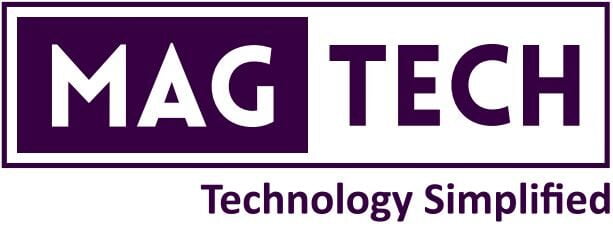As the world transitions towards sustainable energy, ethanol emerges as a flag bearer in renewable energy solutions. It offers a multifaceted solution in India, where energy security, rural development, and environmental sustainability are crucial factors. Let’s find out why the production of ethanol and its benefits are pivotal in India’s green energy sector and economic development.
Table of Contents
ToggleUnderstanding Ethanol: A Renewable Biofuel
India’s energy sector has long relied heavily on imported fossil fuels, especially crude oil. Nearly 88% of India’s crude oil requirement is met through imports, placing a significant burden on the economy and increasing vulnerability to global price volatility and geopolitical tensions. This dependence drains foreign exchange reserves and exposes the country to energy insecurity.
In response, India is aggressively pivoting towards renewable energy solutions—one of the most promising being ethanol, a clean-burning biofuel derived from organic sources such as sugarcane molasses, damaged food grains, and agricultural residues. It serves as a fuel alternative and represents a strategic energy resource in the nation’s broader decarbonization and self-reliance efforts.
A cornerstone of this shift is the Ethanol Blended Petrol (EBP) Programme, launched by the Government of India to blend ethanol with petrol and reduce crude oil imports. The target is ambitious: achieve 20% ethanol blending (E20) by 2025-26 , a goal that was originally set for 2030 but has been advanced due to rapid infrastructure and policy advancements. As of 2024, India has already reached a 12.7% national average blending rate in June 2024 (Add references), reflecting steady and focused progress.
What makes ethanol particularly valuable is its dual benefit: it reduces tailpipe emissions (carbon monoxide, hydrocarbons, and particulate matter) and enhances octane levels in petrol, improving fuel combustion efficiency. It also supports the Make in India initiative by leveraging domestic resources—crops, agri-waste, and rural industry—to build a cleaner and more sustainable energy economy.
In this context, ethanol isn’t just a green fuel—it’s a strategic tool for energy diversification, foreign exchange savings, and rural economic growth. Its growing role in India’s energy mix signals a decisive turn toward cleaner fuels, reduced dependence on fossil imports, and a resilient, self-sustaining future.
To understand how it can benefit the Indian economy, we must understand its feedstock and production process.
The Ethanol Production Process: From Farm to Fuel
Ethanol production is a multi-step process that transforms agricultural feedstocks into a clean-burning, renewable fuel. In India, this process primarily utilizes sugarcane molasses, damaged food grains, and increasingly, alternative sources like sweet sorghum and agricultural residues. The production journey encompasses several key stages:
Feedstock Preparation
The process begins with the selection and preparation of feedstocks. Sugarcane molasses, a byproduct of sugar production, is commonly used due to its high sugar content. Alternatively, starch-rich crops like maize and damaged grains require milling to break them down into a fine meal. This meal is then mixed with water and enzymes to form a slurry, initiating the conversion of starches into fermentable sugars.
Saccharification and Liquefaction
In this stage, the slurry undergoes saccharification, where enzymes like glucoamylase break down complex carbohydrates into simple sugars. This step is crucial for feedstocks that are not naturally high in sugar, ensuring that the subsequent fermentation process is efficient.
Fermentation
The sugar-rich solution is then transferred to fermentation tanks, where yeast is added. Under anaerobic conditions, the yeast converts sugars into ethanol and carbon dioxide. This process typically lasts between 24 to 72 hours, depending on the feedstock and fermentation conditions.
Distillation
Post-fermentation, the mixture—now containing about 10-15% ethanol—is subjected to distillation. This process separates ethanol from the residual water and solids, producing a solution with approximately 95% ethanol content.
Dehydration
To achieve fuel-grade ethanol, the 95% ethanol solution undergoes dehydration to remove the remaining water. Modern facilities employ molecular sieve technology, which efficiently extracts water molecules, yielding anhydrous ethanol with 99.5% purity.
Co-Product Utilization
The byproducts of ethanol production, such as distiller’s grains, are not wasted. These co-products are rich in nutrients and are commonly used as livestock feed, contributing to a circular economy and adding value to the production process.
India’s ethanol production infrastructure is rapidly evolving, with advancements in technology and diversification of feedstocks enhancing efficiency and sustainability. This comprehensive process not only supports the nation’s energy goals but also bolsters agricultural and economic development.
The diversification of feedstock and enhanced methods of ethanol production give us a better chance to reduce fossil fuel exploitation. Let’s take a glance at the feedstock used to produce in India.
Feedstock Diversification to Enhance Sustainability: A Better Way to Accept Ethanol
Relying solely on sugarcane poses challenges due to its high water consumption and susceptibility to climate variations. Diversifying feedstocks not only ensures a steady supply but also promotes sustainable agricultural practices.
- Maize: With its high starch content, maize is an efficient ethanol source. However, increased demand has led India to become a net importer of maize, impacting local industries.
- Sweet Sorghum: Sweet sorghum is being considered as an alternative feedstock. It is recognized for its resilience and lower water requirements.
- Agricultural Waste: Utilizing crop residues and by-products not only provides a sustainable feedstock but also addresses waste management issues.
- Innovative Sources: Companies like Amul are exploring ethanol production from whey, a by-product of cheese and paneer production, showcasing the potential of waste-to-energy initiatives.
This diversified feedstock inclusion will transform India into one of the leaders of ethanol production in the world. The International Energy Agency (IEA) depicts that India is showing immense potential to triple its ethanol production and consumption.
This poses a great foundation for a fruitful investment in the renewable energy sector in India. The economic impact of this sector will also empower the agricultural sector of the country.
The Economic Impact of Ethanol Production on India’s Agricultural Sector
Ethanol production is helping India’s farmers and rural economy in many ways. Creating a new market for crops like sugarcane and maize gives farmers another way to earn money. Instead of letting excess or damaged crops go to waste, they can now sell them to ethanol plants.
This also helps keep crop prices stable. When farmers know they have more than one market, they are less affected by falling prices or market uncertainty.
Setting up ethanol plants in rural areas creates jobs, not just in the plants but also in transport, storage, and support services. These jobs bring income and opportunities to local communities.
The ethanol industry also encourages better crop planning and diversification. This means farmers can grow a wider variety of crops without worrying about losing income. Overall, ethanol production strengthens the rural economy and brings more security to India’s agricultural sector.
The same push will also encourage industrial growth in different segments. Here is how.
Industrial Growth:Catalyzing Infrastructure Development
The rise of ethanol as a mainstream fuel is not only transforming India’s energy mix, but it is also driving rapid industrial growth. To meet the government’s target of 20% ethanol blending (E20) by 2025-26, India is ramping up its ethanol production capacity significantly by taking new steps.
One of the key drivers of this growth is the expansion of distilleries. Dozens of new plants are being set up across the country, especially in states with abundant agricultural produce like Uttar Pradesh, Maharashtra, and Bihar. Existing sugar mills are upgrading their facilities to include ethanol production units, while standalone distilleries are emerging in maize-producing states.
This growth demands substantial investment in infrastructure, including storage tanks, blending terminals, ethanol pipelines, and transport logistics. Oil Marketing Companies (OMCs) are investing in specialized ethanol handling systems at their depots and refineries. Additionally, private companies and cooperatives are stepping in to develop supply chain infrastructure that ensures seamless distribution from plant to petrol pump.
There is also a notable uptick in technology adoption. Advanced fermentation technologies, molecular sieve dehydration systems, and energy-efficient distillation units are becoming standard.
The ethanol push is also encouraging public-private partnerships (PPPs). These collaborations are vital for scaling production, sharing risks, and ensuring long-term sustainability. With strong government backing, such as soft loans, viability gap funding, and policy incentives, ethanol-linked industries are experiencing a revival and reshaping the landscape of India’s green industrial future.
A Sustainable Approach by Embracing the Circular Economy
Ethanol production fits perfectly within the principles of the circular economy, where waste is minimized, resources are reused, and value is maximized at every stage. Instead of relying solely on fresh agricultural inputs, India’s ethanol industry uses a wide range of feedstocks, including sugarcane molasses, surplus grains, damaged food crops, and agricultural waste. This reduces food waste, cuts disposal costs, and turns low-value byproducts into high-value energy.
Moreover, the production process itself generates useful co-products like distillers’ dried grains with solubles (DDGS), which serve as high-protein animal feed. This adds another revenue stream for producers and supports the livestock sector, enhancing overall resource efficiency.
Water and energy recycling systems within modern ethanol plants further minimize environmental impact, making operations more sustainable. In some cases, even carbon dioxide released during fermentation is captured and reused in the food and beverage industries.
By linking agriculture, industry, and clean energy, ethanol production strengthens rural economies and reduces pressure on fossil fuels. It’s a model that adds value at every stage—from the farm to the fuel tank—while keeping resource use efficient and regenerative.
For investors, this makes a smart, future-ready opportunity: one that aligns with global sustainability goals and promises long-term, diversified returns.
Ready to Fuel the Future? Consult with MAGTECH for Your Ethanol Venture
Ethanol is more than just a green fuel—it’s a strategic pillar in India’s journey toward energy independence, rural empowerment, and sustainable industrial growth. As the country accelerates its E20 goals, investing in ethanol production offers long-term economic and environmental benefits.
For entrepreneurs and investors looking to enter this space, MAGTECH is the ideal partner. With over 10 years of experience, MAGTECH specializes in designing efficient ethanol production units and identifying high-potential opportunities across India.
Contact us for a free consultation and understand how ethanol is the stepping stone for a successful green biofuel journey.


